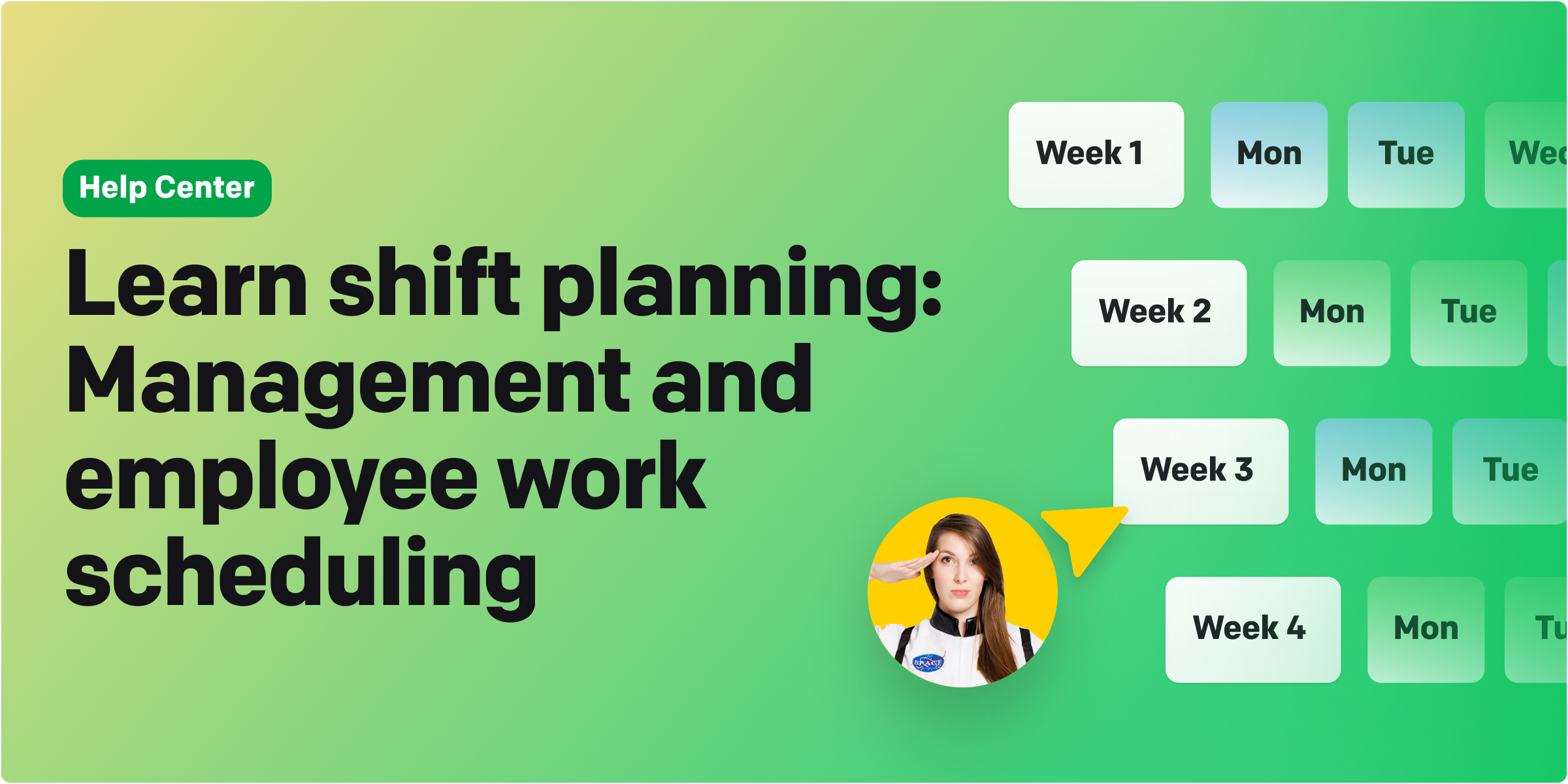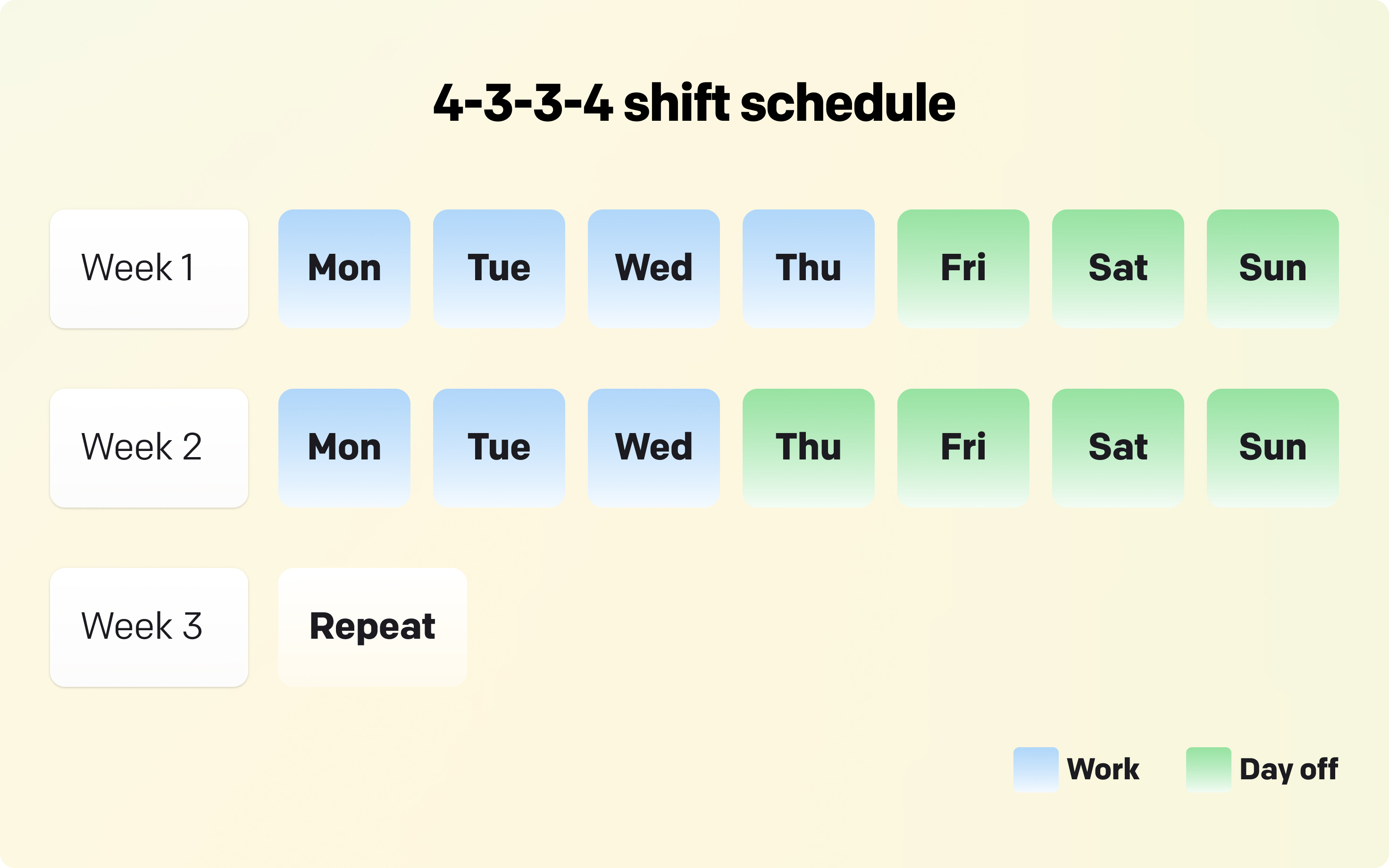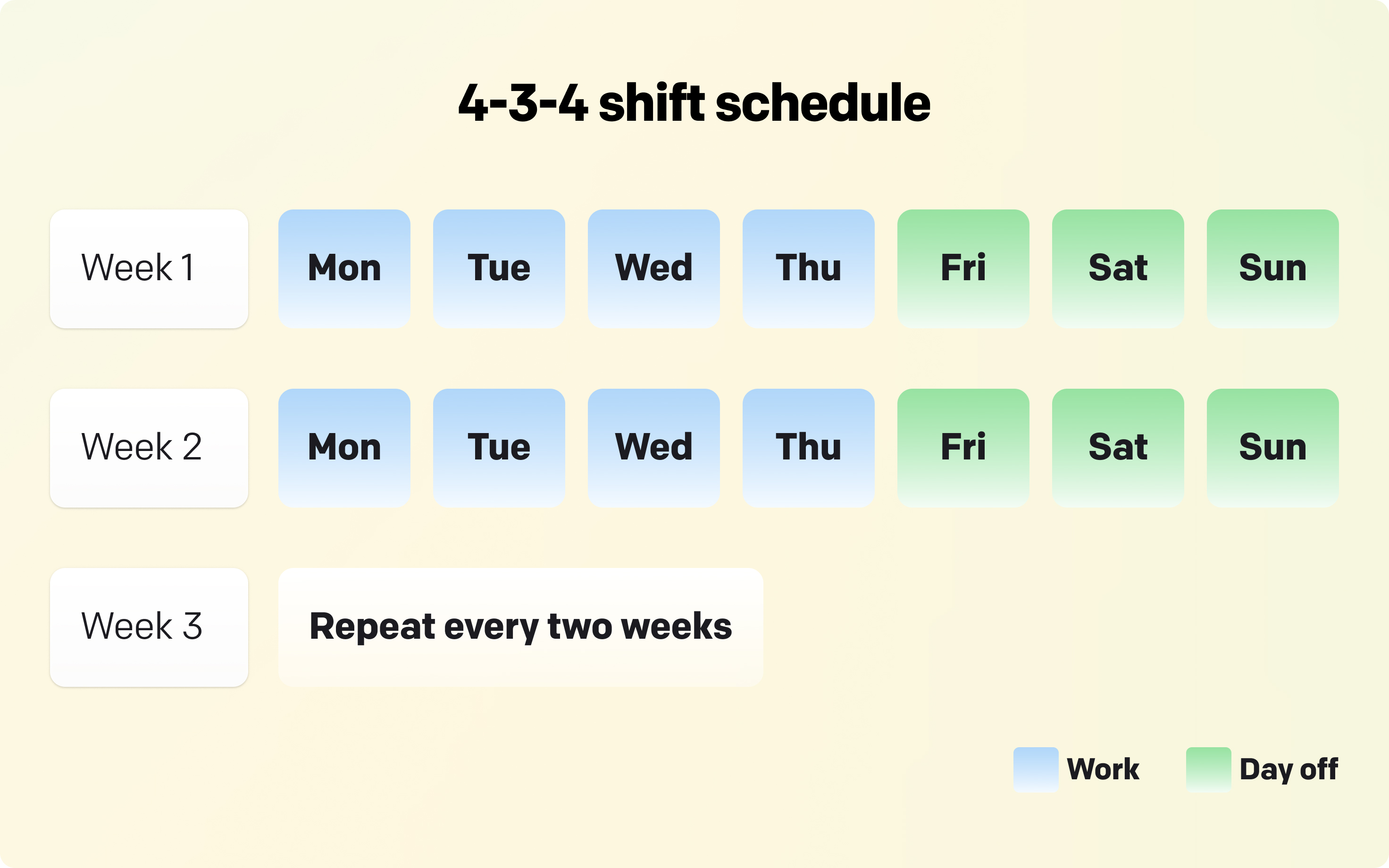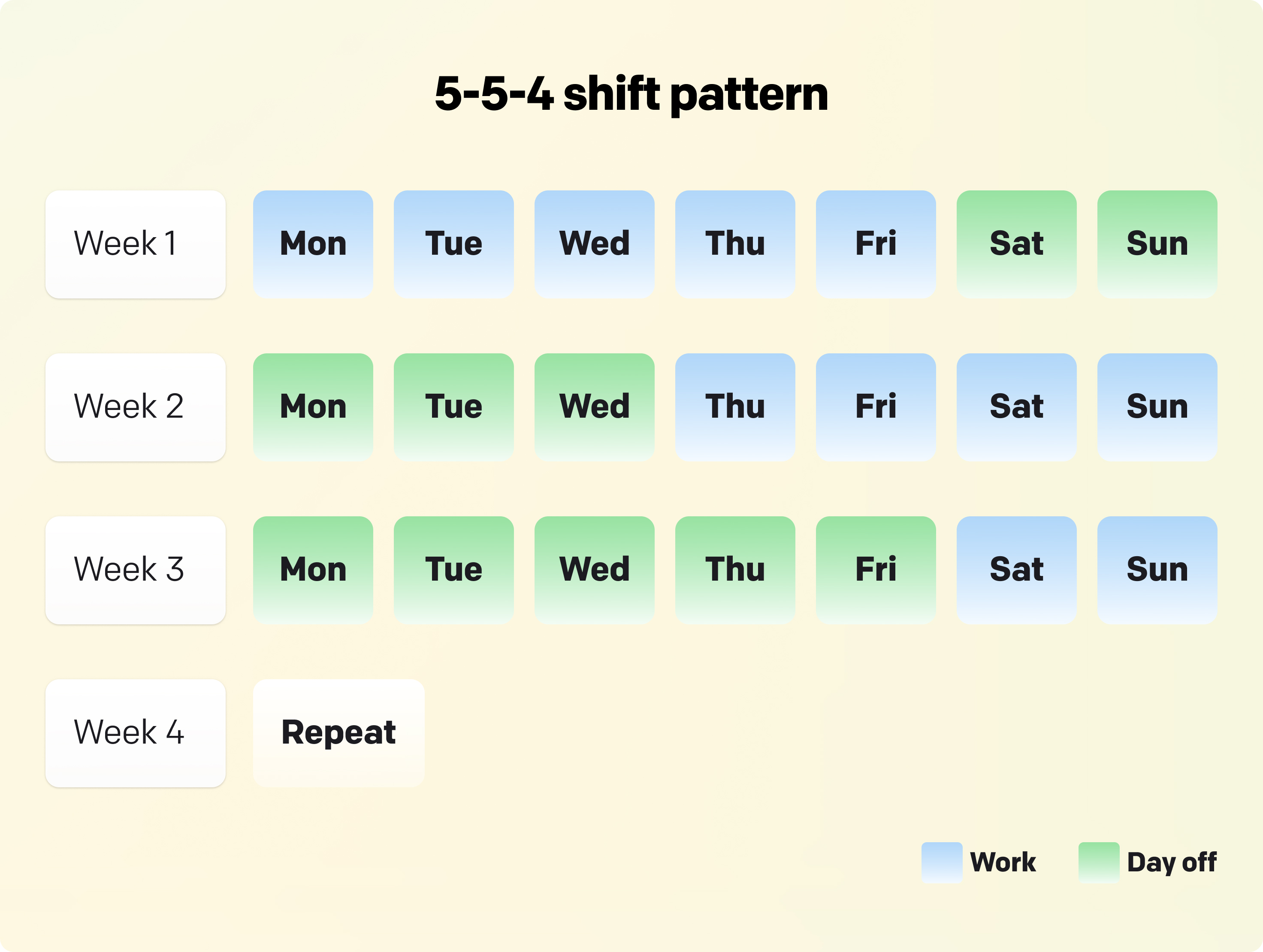
If you’ve ever had to juggle a bunch of employee schedules, you know it can feel like trying to keep a dozen plates spinning at once. But here’s the good news: an effective employee scheduling solution can make a world of difference for your business. Whether you’re running a hospital, a retail store, a hotel, or a manufacturing plant, having a solid plan for who works when will ensure things run smoothly.
Data shows that the global market size for employee scheduling software was valued at $307.1 million in 2020 and is expected to reach $1210.66 million by 2032, with a compound annual growth rate (CAGR) of 12.10% over the forecast period.
As any company leader knows, one of the biggest expenses in running a business is labor. It can make up as much as 70% of your total costs, including employee wages, benefits, payroll, and related taxes. Only by managing change properly can you cut down on these labor costs.
In this article, I’ll break down all the core parts of shift planning. I’ll look at different types of shifts, talk about how to balance business needs with employee availability, and show you how tools like HelpDesk can make scheduling a breeze.
What is shift planning?
Shift planning, also referred to as workforce scheduling or rostering, involves arranging employee work schedules to maintain seamless business operations. It’s particularly significant in industries requiring uninterrupted service, such as healthcare, retail, hospitality, and manufacturing.
Key components of shift planning
Planning shifts involves balancing business needs with employee preferences and legal requirements. Here’s a breakdown of what to consider:
Workforce analysis
Determine the number of employees needed for each shift, considering peak hours, special events, and seasonal demands.
Shift types
Different types of shifts include fixed, rotating, split, and on-call shifts. Each type has its own advantages and challenges.
Employee availability
Consider when your employees are available, their preferences, and any constraints they might have, such as part-time work, school schedules, or multiple jobs.
Legal and regulatory compliance
Follow labor laws regarding working hours, rest periods, overtime, and employee rights.
Technology integration
Use shift planning software, apps, and tools to automate shift planning, reduce errors, save time, and manage complex variables with real-time adjustments.
How to do shift planning in HelpDesk
Planning shifts for your HelpDesk team doesn’t have to be a headache, thanks to auto-assignments. Want to know how to manage employee schedules like a pro?
HelpDesk’s features can save you a lot of time on shift planning, making it much easier to maintain adequate staffing levels.
Here’s a step-by-step guide to get you started:
1. Access auto-assignments
First, log in to your HelpDesk account and head over to the “Automations” section.
This is your hub for managing how tasks get distributed among your team members.

2. Select assignment type
Create a new rule or use the existing rule template.

Next, choose how you want tasks to be assigned:
- Round-robin: Tasks go to agents one after another in a set order.
- Random agent/admin: Tasks are randomly assigned to available agents.
- Specific agent: Tasks are directed to a particular agent based on certain criteria.
3. Configure user settings
Users must activate this feature in their profile settings by toggling on the auto-assignment option to participate in the auto-assignment process.
You can also request an option for agents to manage their auto-assignment settings. Contact us to add this feature to your HelpDesk license.
These auto-assignment settings in the user profile serve as the master control, and admins can modify these settings for other admins and agents.
4. Adjust team settings
As an admin, you have the power to manage and tweak individual auto-assignment settings to make sure tasks are optimally distributed. This includes setting rules for task prioritization rules and distributing the workload across the team.
5. Set up assignment rules
Define rules and criteria for task assignments based on task type, urgency, and agent expertise. Use these rules to assign the right tasks to the right agents at the right time.
6. Monitor and adjust
Keep an eye on how the auto-assignment process works and make adjustments as needed. Use HelpDesk’s analytics and reporting tools to track performance and spot areas for improvement.
For more detailed instructions and visual aids, visit the HelpDesk auto-assignments Help Center.
What should a shift plan contain?
Creating a great shift plan is fundamental to staying on top of performance. Here’s what you’ll want to include:
Shift schedule
Clearly spell out the dates and times for each shift, specifying when each shift starts and ends. Label different types of shifts, such as morning, afternoon, or night, so agents understands their specific working hours and responsibilities. The shift schedule should also account for open shifts and provide a mechanism for employees to bid on or swap these shifts.
Employee assignments
Include a list of who’s working each shift, along with their roles or responsibilities. Incorporate basic contact information for quick communication in case of any changes or emergencies that require immediate attention.
Coverage requirements
Determine the minimum and maximum number of people needed for each shift to cover all tasks. Consider the necessary skill sets required for each shift to have the right expertise available for the roles needed during each period.
Employee availability
Take into account your employees’ availability and preferences, including any part-time schedules, study commitments, or other constraints they might have. Pre-approved leave, vacations, and time-off requests should also be considered to create a realistic and workable shift plan.
Compliance and regulations
Adhere to labor laws regarding working hours, rest periods, and overtime to stay compliant with legal requirements. Follow any union agreements to avoid potential conflicts and promote a fair working environment.
Break times
Schedule regular break times within each shift so your team members get the rest they need. Clearly defined break times help maintain productivity and provide employees with adequate time to recharge during their shifts.
Overtime and extra shifts
Establish clear guidelines for handling overtime, including who needs to approve it and how it will be compensated. Develop a plan for assigning extra shifts or covering absences so that these procedures are transparent and fair to all employees.
Shift rotation
Detail how shift rotation works—whether it’s weekly, monthly, or otherwise. Take a close look at the rotation and see if it is fair to all employees. Establish an equitable distribution of desirable and less desirable shifts over time.
Contingency plans
Maintain a list of backup staff who can step in if someone can’t make their shift. Have clear procedures in place for handling emergencies or any unexpected situations that may arise.
Communication channels
Decide on methods for notifying employees about their shifts. This could be through email, SMS, or a shift planning app. Provide a way for employees to give feedback or request changes to their shifts, fostering open communication and flexibility. The communication channels should also facilitate easy shift swaps to improve flexibility and employee satisfaction.
Review and adjustment
Regularly review your shift plan to assess how well it’s working and make adjustments as needed. Flexibility in adapting to changes in demand, employee availability, or other factors will render your shift plan relevant and functional.

Including these elements will create a shift plan that is organized, fair, and ready to handle any surprises that come your way!
Download the free work schedule template
Looking to streamline your team’s productivity? Download the free work schedule template and make scheduling effortless. This “Shift planning document for managers” is elemental for organizing shifts. With our work schedule template, you’ll have all the tools needed to ensure your team runs like a well-oiled machine. Don’t miss out—create your copy today and take the first step towards a more organized flow.
👉 Make your COPY of the “Shift planning document for managers.”
What are the benefits of shift planning?
Have you ever wondered why shift planning is such a big deal in businesses? Let’s dive into the benefits and see how it can make a huge difference:
Operational efficiency
First off, scheduling shift work implies that you have the right number of staff on hand exactly when you need them. This way, you’re not dealing with too many idle hands or struggling with too few people during peak times.
Employee satisfaction
Another big plus is that it boosts employee satisfaction. When you take into account your team’s preferences and give them fair and predictable schedules, they’re happier. And happy employees are less likely to leave, saving you from high turnover rates.
Cost management
Then, there’s cost management. By optimizing shift patterns and cutting down on unnecessary overtime, you can hold labor costs under control. It’s all about making the most out of your budget without overworking your team.
Improved customer service
Shift planning also leads to improved customer service. With the right number of staff available, you can meet your customers’ needs promptly and reliably, which makes them satisfied and loyal to your business.
Flexibility
Lastly, it gives you flexibility. Things change—whether it’s a sudden surge in demand, an unexpected absence, or some other operational hiccup. Shift planning allows you to adjust on the fly.
Challenges in shift planning
As you know, planning shifts in any organization is far from a simple task. In fact, it requires careful consideration and balancing of many factors. In the next section, I’ll discuss some major challenges experts face in planning for change so that you can avoid them beforehand.
Complexity
It’s no secret that shift planning can get pretty complex. You’re juggling a lot of different factors, from employee preferences and legal requirements to the needs of the business. It’s like trying to solve a giant puzzle in which all the pieces change shape!
Fairness and transparency
Make sure your processes are fair and transparent. Nobody likes feeling left out or unfairly treated, right? Ensuring that an agent sees the scheduling process as fair can really help avoid conflicts and keep team members comfortable.
Real-time adjustments
And then, there’s the need to adapt on the fly. Life happens—people get sick, emergencies come up, or maybe there’s a sudden rush of customers. Managing employee schedules in real time is fundamental to staying on track.
What is the best software for employee scheduling?
When it comes to employee scheduling, businesses need reliable tools to manage their workforce. There are several excellent shift scheduling software vendors available, but one that stands out is HelpDesk with its powerful auto-assignment feature.
Why is HelpDesk the best software for employee scheduling?
1. Auto-assignment feature to manage shifts
HelpDesk’s auto-assignment feature automates the task assignment process, confirming that the right employees are assigned to the right tasks based on their skills, availability, and workload. This feature minimizes manual intervention, reduces errors, and provides optimal utilization of the workforce.
2. Employee availability and preferences
The shift management software allows employees to input their availability and preferences, making it easier to create schedules that meet both business needs and employee satisfaction. This feature helps in reducing scheduling conflicts and improving employee morale.
3. Compliance and regulatory adherence
HelpDesk makes all schedules compliant with labor laws and regulations, including working hours, rest periods, and overtime rules. Such compliance is critical to avoid legal issues and guarantee fair treatment of employees.
4. Real-time adjustments
With HelpDesk, managers can make real-time adjustments to the schedule in response to unexpected changes, such as employee absences or sudden increases in demand. System flexibility means continuity and sustainability.
5. Communication and notifications
HelpDesk integrates robust communication features that notify employees about their schedules, any changes, and important updates. All your teams will always stay informed and up-to-date.
6. Analytics and reporting
The software provides comprehensive analytics and reporting tools that help managers track key metrics, identify trends, and make data-driven decisions to optimize workforce management.
Find out more about HelpDesk reports.
How do you schedule shifts effectively? Shift schedules explained
Getting shift scheduling right can make your business thrive while keeping your employees satisfied and complying with all the necessary regulations. Here are some tips to help you master shift scheduling:
- Understand business needs. Get a clear picture of your business’s unique demands. When you know your peak hours, special events, and seasonal fluctuations, you can figure out how many employees you need for each shift.
- Use scheduling software. Now that you understand your needs, think about using scheduling software. Tools like HelpDesk, with its auto-assignment feature, can save you a lot of time by automating and optimizing your scheduling process. This way, you always have the right number of people available when you need them.
- Consider employee preferences. Your employees are the heart of your business. By considering their availability and preferences, you can significantly boost their satisfaction and reduce turnover. Content employees tend to stick around longer and work harder.
- Ensure compliance. Don’t forget about labor laws and regulations regarding working hours, rest periods, and overtime. If you follow these rules, your scheduling practices will be fair and 100% legal.
- Communicate to the point. Always hold your employees in the loop by using straightforward communication channels to notify them of their schedules and any changes. This prevents misunderstandings and lets agents know what to expect.
- Monitor and adjust. Review your schedule regularly. Gather feedback from your team and be ready to adjust based on their input and any changes in your business needs.
Now, read about the most common approaches to shift scheduling.
What is the 4-3-3-4 shift schedule?
The 4-3-3-4 shift schedule typically involves employees working four consecutive days followed by three days off, then another three days followed by four days off. This cycle repeats, providing a balanced distribution of work and rest periods.
Example:
- Week 1: Work Monday to Thursday, off Friday to Sunday.
- Week 2: Work Monday to Wednesday, off Thursday to Sunday.
- Week 3: Repeat.

What is the 4-3-4 work schedule?
The 4-3-4 work schedule is similar to the 4-3-3-4 schedule, but with slight differences. Employees work four consecutive days, have three days off, and then work another four days, followed by three days off. This pattern is repeated every two weeks.
Example:
- Week 1: Work Monday to Thursday, off Friday to Sunday.
- Week 2: Work Monday to Thursday, off Friday to Sunday.
- Week 3: Repeat.

What is the 5-2-5-3 work schedule?
The 5-2-5-3 work schedule assumes that employees work five consecutive days followed by two days off and then work another five consecutive days followed by three days off. This scheme provides a regular work week with additional rest periods.
Example:
- Week 1: Work Monday to Friday, off Saturday to Sunday.
- Week 2: Work Monday to Friday, off Saturday to Monday.
- Week 3: Repeat.

What is the 5-5-4 shift pattern?
The 5-5-4 shift pattern is a common rotating schedule in which employees work five days, have five days off, work four days, and then have five days off. This cycle provides a balance between work and free time while maintaining operational coverage.
Example:
- Week 1: Work Monday to Friday.
- Week 2: Off Saturday to Wednesday, work Thursday to Sunday.
- Week 3: Off Monday to Friday.
- Week 4: Repeat.

What is the shift plan for 24/7?
A 24/7 shift schedule provides continuous service throughout the day and week. Typical 24/7 shift patterns include:
- 4-on-4-off: Employees work four consecutive 12-hour shifts, followed by four days off.
- DuPont schedule: A rotating schedule with a mix of day and night shifts involving a cycle of 12-hour shifts over a four-week period.
- Panama schedule: Employees work two days, have two days off, work three days, have two days off, work two days, and have three days off. This cycle repeats every two weeks.
Example of Panama schedule:
- Week 1: Work Monday, Tuesday; off Wednesday, Thursday; work Friday, Saturday, Sunday.
- Week 2: Off Monday, Tuesday; work Wednesday, Thursday; off Friday, Saturday, Sunday.
- Week 3: Repeat.

These shift patterns can help you operate uninterruptedly, providing employees with adequate rest periods and maintaining compliance with all necessary labor laws.
Try HelpDesk’s ticketing system for free to track cases and implement the best employee scheduling practices.
